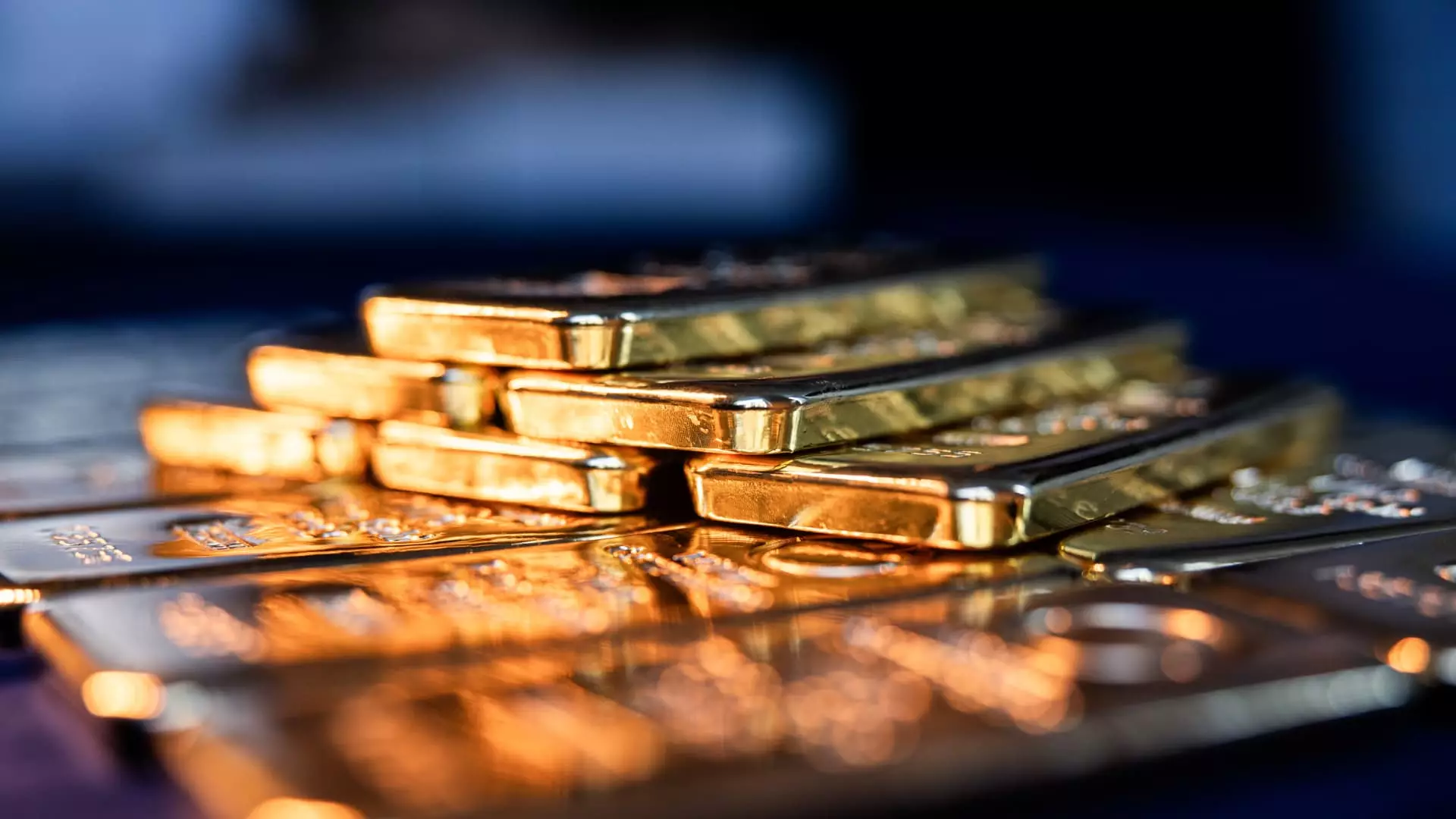As global economic tensions rise and the spectre of recession looms overhead, gold, the timeless symbol of wealth and security, has found itself in the limelight once again. Recent turmoil, particularly centered on the U.S.-China trade war, has left many investors scrambling for safe havens. The price of gold has surged to unprecedented heights, pushing above $3,000 an ounce for the first time. Yet, amidst this seemingly golden opportunity lies a precarious reality that investors must be cautious about.
While the allure of gold as a hedge against uncertainty is strong, the climate of euphoria surrounding its recent bull run carries the distinct risk of a dangerous bubble. Analysts such as Sameer Samana from Wells Fargo Investment Institute have pointed out that we might be nearing a peak in optimism regarding gold. This sentiment invites a critical assessment of the current market dynamics and the potential pitfalls awaiting those who dive headfirst into this ostensible gold rush.
Understanding Market Sentiment
The recent uptick in gold prices is no accident; it reflects the mounting fears surrounding the economy and the geopolitical landscape. With the S&P 500 enduring a noticeable downturn, and questions swirling around the stability of the financial system due to aggressive tariff policies, gold has emerged as a beacon of reliability in tumultuous times. However, the very nature of financial markets involves cycles of optimism and pessimism. Investors must ask themselves: are we experiencing genuine value in gold, or merely a momentary spike driven by anxiety?
One of the most alarming aspects of this feverish market enthusiasm is the tendency for investors to gravitate toward gold at precisely the wrong moment. Are we reframing gold as a speculative asset rather than a safety net? That question bears heavy consideration as historical data suggests that gold tends to suffer during economic downturns. Real performance during crises has often favored bonds or cash equivalents, casting doubt on gold’s supposed status as the ultimate safe haven.
The Overbought Condition of Gold
The term “overbought” frequently comes up in market analysis whenever a particular asset’s price climbs too quickly, suggesting an unsustainable increase. Experts warn that chasing after gold in its current inflated state could lead to regret. While enthusiasts argue for its merits as a diversifier in investment portfolios, now may not be the time to be lured by the glittering promise of gold as a foolproof investment.
Some analysts, such as Jordan Roy-Byrne of The Daily Gold, maintain that despite current prices, gold may have room to accelerate in the long term. However, this perspective must be tempered by a cautious acknowledgment of market cycles. The excitement generated around gold has fueled speculative behavior that could just as easily lead to a future crash, resulting not just in financial losses but potential disillusionment with commodities as a whole.
Tangible Assets vs. Financial Security
Amid economic uncertainties, there has also been a significant push for physical gold and related commodities. Tim Schmidt of Gold IRA Custodians has noted a striking shift towards tangible, “real” assets as consumers navigate today’s chaotic market. However, it’s essential to consider the implications of investing in physical gold, particularly in terms of logistical concerns that come with ownership, such as storage costs and the risks of theft or loss.
The psychological comfort derived from holding a tangible asset is undeniable. Yet, apocalyptic scenarios surrounding the collapse of the financial system are often overblown. Investing in gold purely for the sake of fear may reveal more about an investor’s mindset than the inherent value of the asset itself. Physical gold may serve as a fascinating piece of history but should not eclipse the importance of more balanced, traditional forms of financial security.
The Jewelry Dilemma
Investors seeking gold’s allure may also consider jewelry as a route for making sound financial investments, particularly high-quality pieces from reputable brands that may appreciate over time. However, this approach raises its own set of questions. Does the artistry and craftsmanship of fine jewelry truly warm the insatiable fires of investment appeal, or is it merely a guise for emotional spending?
Tiffany’s CEO, Anthony Ledru, has famously claimed that high-quality jewelry can be “recession-proof.” Still, one must ponder whether this assertion is fundamentally sound, or simply wishful thinking. During times of economic strain, how often do consumers prioritize the purchase of luxury items over other essential investments? History suggests that while luxury items may retain value, they are far from insulated against economic downturns.
Investment Strategy Reconsidered
As financial advisors sound alarms regarding gold’s current standing, the call for prudent, diversified portfolios has never been more urgent. Embracing alternative investments and maintaining a healthier cash reserve may emerge as more judicious approaches during turbulent times rather than purely pouring resources into gold. A well-rounded portfolio, guided by thoughtful financial planning and regular consultation with experts, could be the key to weathering the storm.
In this landscape, the risks of overindulgence in any single asset class, especially one as volatile as gold, should remain front and center in investor discussions. The concerns of rash decisions driven by fear overshadow the potential merits of a calculated investment strategy, urging caution rather than impulsivity. As the urge for the latest trends grows stronger, investors must resist the temptation to let speculative frenzies dictate their financial futures.

